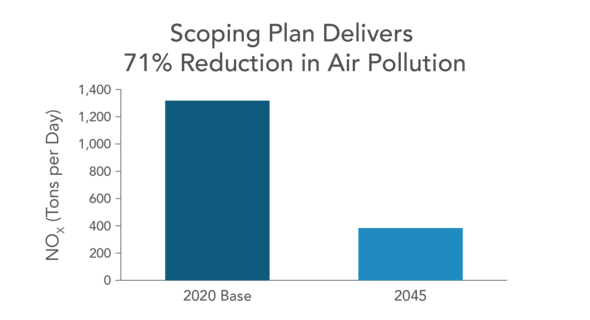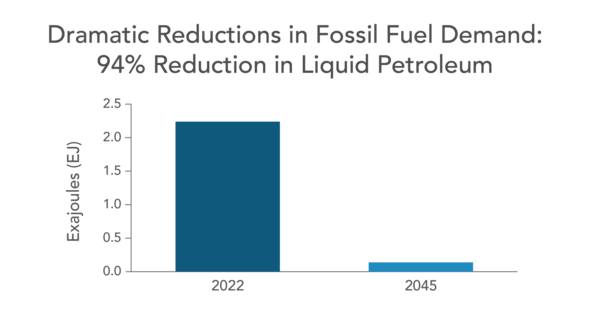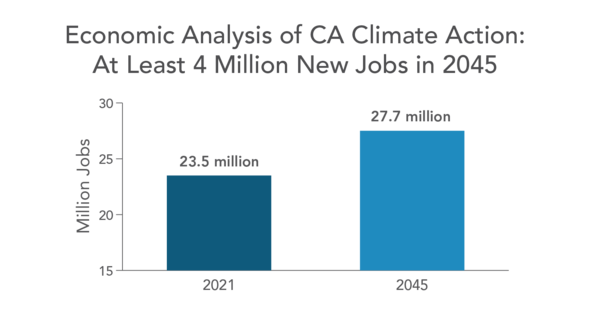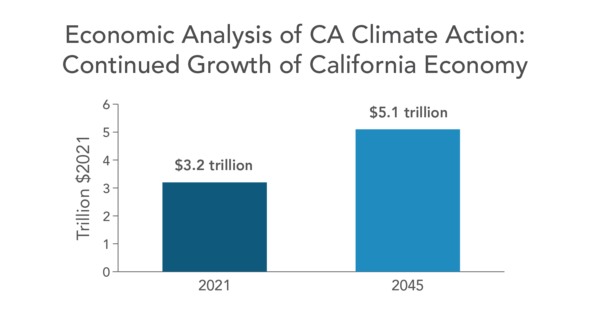|
SACRAMENTO – The California Air Resources Board today approved the final proposed 2022 Scoping Plan, a world-leading roadmap to address climate change that cuts greenhouse gas emissions by 85% and achieves carbon neutrality in 2045. The 2022 Scoping Plan provides a detailed sector-by-sector roadmap to guide the world’s fourth-largest economy away from its current dependance on petroleum and fossil gas to clean and renewable energy resources and zero-emission vehicles.
The action by the Board today finalizes a process to develop the final plan that has been in the works for two years. This included dozens of public meetings, workshops and presentations and two Board meetings with comments from hundreds of members of the public, stakeholders and community members.
The plan draws on and continues several successful climate programs currently in effect but also stresses the need to radically accelerate and increase their pace and scale. This includes the need for an accelerated target of a 48% reduction of greenhouse gas emissions below 1990 levels by the end of this decade. By 2045, this economy-wide shift away from fossil fuels seeks to:
- Reduce fossil fuel consumption (liquid petroleum) to less than one-tenth of what we use today – a 94% reduction in demand.
- Cut greenhouse gas emissions by 85% below 1990 levels
- Reduce smog-forming air pollution by 71%
- Create 4 million new jobs.
- Save Californians $200 billion in health costs due to pollution in 2045

The plan’s transition away from fossil fuel combustion will benefit residents of the state’s most impacted communities who are disproportionately burdened by pollution from the transportation sector. It also responds to concerns raised by leaders from those communities, including members of the Environmental Justice Advisory Committee (EJAC). The 2022 Scoping Plan includes a commitment to build no new fossil gas-fired power plants and increases support for mass transit. It also calls for a multi-agency process to ensure that the transition away from oil extraction and refining is equitable.
“Implementing this plan will achieve deep decarbonization of our entire economy, protect public health, provide a solid foundation for continued economic growth, and drastically reduce the state’s dependence on fossil fuel combustion. It will clear the air in our hardest hit communities,” said CARB Chair Liane Randolph.
“Now begins the hard work of putting the plan into action. The impacts of climate change in California are personal: we have all been affected by wildfires, years of drought, or record-breaking heat waves. Making this plan work is our once-in-a-generation opportunity to change the California our children inherit for the better. To reach carbon neutrality in less than a quarter of a century will require all levels of government, all stakeholders – indeed, everyone in the Golden State to be part of the solution. There is no time to waste.”

The plan also includes actions to capture and store carbon through the state’s natural and working lands (including its forests), and calls upon a variety of mechanical approaches to remove and safely store carbon dioxide to address the remaining 15% of greenhouse gas emissions that will remain in 2045 after the stringent direct reductions from every regulated source.

The availability of unprecedented state and federal investments will help propel this plan into ambitious action to address the existential crisis of climate change. The plan’s guidance will allow California to effectively and equitably build a better future for Californians through climate action.
Implementation of the plan keeps California economy on track for continued growth of the economy and jobs. This includes high-road jobs tied to industries such as zero-emission car and truck manufacturing that position California as a major competitor in the global clean-energy marketplace. Economic modeling indicates that, under the plan, California’s economy will reach $5.1 trillion by 2045 (from $3.2 trillion today), with a related increase of at least 4 million new jobs.


The initial draft of the 2022 Scoping Plan was considered by the Board at its June meeting and discussed with the EJAC in September. The final plan includes changes requested by the Board and Governor Newsom, public comments, and recommendations from the EJ Advisory Committee. It also reflects direction from new state laws passed by the Legislature this year.
As a result, the final modeling for the Scoping Plan demonstrates increased ambition, projecting a 48% reduction of greenhouse gases below 1990 levels in 2030, surpassing the minimum statutory emissions reduction goal of 40% below 1990 levels in 2030. The updated modeling also includes 3 million climate-friendly homes by 2030 (and 7 million by 2035), 6 million heat pumps deployed by 2030, no new fossil gas capacity in the electricity sector, and 20 gigawatts of offshore wind capacity by 2045.
Additionally, the plan provides the Climate Vulnerability Metric, a new tool to identify communities especially vulnerable to harm from a changing climate and worsening air quality, ensuring that those communities’ public health and environmental concerns are front-and-center as the state moves ahead.
Finalizing this plan is only the first step. Hitting the targets in the plan require program implementation and infrastructure buildout on a very ambitious timeline. This will require collaboration across state agencies and local governments, along with the full participation of all stakeholders.
|